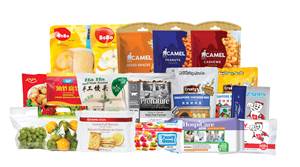New Process & Material Permits Big Weight Savings on Foamed Parts
New firm develops technology that offers weight reductions up to 65% for large injection molded polyolefin parts.
A maker of duck decoys has applied for a patent on a plastic cellular structure technology that allows dramatic density reductions in large injection molded polyolefin parts, using a standard press and without affecting the part’s surface or structural integrity. In addition to cutting weight by 65%, the inventors say the foam structure, for which they can control bubble size and arrangement, imparts greater strength to the finished components.
For hunters of water fowl, apart from a gun, a dog, and warm clothes, one must-have element to a successful trip are decoys. Typical decoys are hollow blow molded parts, designed to float, but if struck by shotgun pellets—a distinct possibility given their role in luring ducks within firing range—they tend to sink.
To overcome this, some decoy makers have turned to foamed PS cores, which must be wrapped in burlap and other materials in a labor- and time-intensive process that precludes them from mass production and still presents durability issues. That’s why Jason Minnich and Travis Biggs, owners of Lake Effect Decoy Co. LLC in Cochranton, Pa., saw a market opportunity if they could mass produce a rugged decoy that wouldn’t be hamstrung by the volume and variability issues associated with hand-made solid decoys.
The technology they came up with, for which they filed for patents in February, has led to the creation of a new company, Moxietec, which will license the process and materials for the technology, tradenamed NautXcell, to other companies and markets.
“NautXcell requires a very unique blend of materials and process to achieve the solid core. We’re looking to partner with some bigger companies that can utilize this technology,” Biggs says. “That’s our main goal: grow the Moxietec business with the technology of NautXcell and find other companies that can utilize it.”
Five-Plus Years of R&D
Biggs says Lake Effect began development of a “solid” alternative five or six years ago, initially focusing on the duck’s head. Once that was perfected, the company moved onto the larger decoy body, spending nearly two years tweaking the compound, process, and mold for that larger component.
“There were major hurdles to overcome,” Biggs says. “We wanted to create a solid, lightweight part, utilizing a standard injection molding machine. The biggest challenge was being able to create the honeycomb-like solid core.” Early testing produced parts that were severely deformed and exhibited a loss of surface detail, according to Biggs.
The heads and bodies are molded on two separate machines. The heads have a volume of 49.6 in.3 and a weight of 9 oz, while the bodies have a volume of 291.15 in.3 and a weight of 59.2 oz. If the head and body were molded as solid parts without NautXcell, Biggs says the respective part weights would be 27.12 and 154 oz. The inventors see great potential utility in other thick parts, given that the decoy’s body measures 9.25 in. wide at its thickest point, with a length of 16 in.
In terms of materials, the company has had success with high- and low-density polyethylene, as well as polypropylene. The technology utilizes a pre-compounded pellet loaded with a blowing agent and what was described as several other chemicals. The company declined to say whether the blowing agent was of the physical or chemical variety.
Biggs noted that there are some “pretty unique” elements to the process itself, in terms of temperatures, injection phase, and cooling, but added that all the work was done on a standard press, with no changes to its primary components. Elements of the tools’ venting and heating/cooling had to be specially developed as well.
Today using NautXcell, Biggs says a molder can control the size of the cell structure and its density, making the internal cells very large so a part becomes buoyant, for instance, or creating a denser cell structure to boost component’s strength. Furthermore, molders can modify the material and process to alter the density of the solid outer skin to achieve a variety of wear, impact, and anti-ballistic characteristics. In durability testing, the company has shot at and run over its Gale Force Series decoys, supporting its claim to offer “the most durable production decoy on the market.”
Related Content
Delivering Increased Benefits to Greenhouse Films
Baystar's Borstar technology is helping customers deliver better, more reliable production methods to greenhouse agriculture.
Read MorePolyethylene Fundamentals – Part 4: Failed HDPE Case Study
Injection molders of small fuel tanks learned the hard way that a very small difference in density — 0.6% — could make a large difference in PE stress-crack resistance.
Read MoreFlexible-Film Processor Optimizes All-PE Food Packaging
Tobe Packaging’s breakthrough was to create its Ecolefin PE multilayer film that could be applied with a specialized barrier coating.
Read MoreCommodity Resin Prices Flat to Lower
Major price correction looms for PP, and lower prices are projected for PE, PS, PVC and PET.
Read MoreRead Next
Beyond Prototypes: 8 Ways the Plastics Industry Is Using 3D Printing
Plastics processors are finding applications for 3D printing around the plant and across the supply chain. Here are 8 examples to look for at NPE2024.
Read MoreSee Recyclers Close the Loop on Trade Show Production Scrap at NPE2024
A collaboration between show organizer PLASTICS, recycler CPR and size reduction experts WEIMA and Conair recovered and recycled all production scrap at NPE2024.
Read MoreLead the Conversation, Change the Conversation
Coverage of single-use plastics can be both misleading and demoralizing. Here are 10 tips for changing the perception of the plastics industry at your company and in your community.
Read More
























